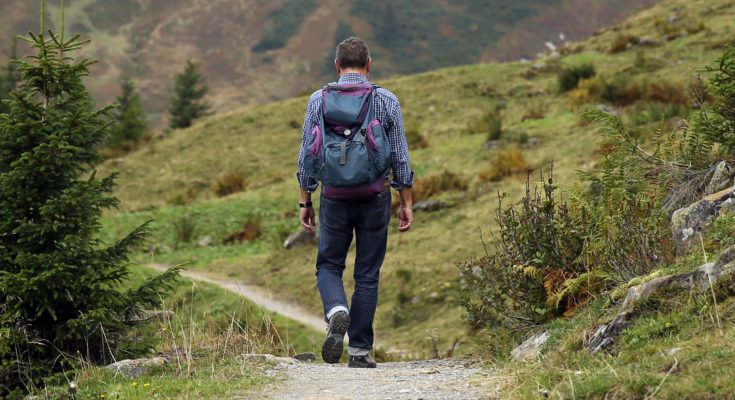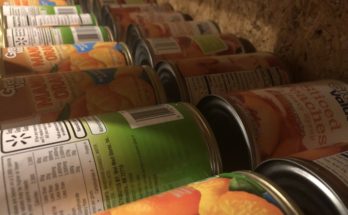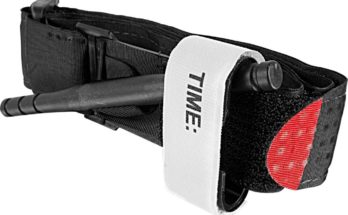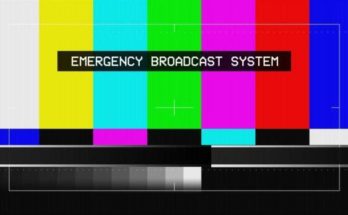A core concept for preppers and survivalists is building a portable kit, sometimes known as Get Home Bag, Bug Out Bag, or Every Day Carry (EDC) kit. While the definitions of each can be a bit confusing, the purpose of a Get Home Bag is generally to ensure a prepper has a basic set of supplies to walk or drive home in the austere conditions following a a catastrophic disaster. On the other hand, a Bug Out Bag is designed to grab and go in case a prepper needs to evacuate home quickly following a disaster. The term Every Day Carry (EDC) is also used to describe small kits that contain items, such as a pill container, a matchbox, or a pocket knife that preppers may want to ensure they have with them at all times. I prefer the idea of a Get Home Bag that is small enough to carry every day, usually in the trunk of my car or in my hotel room when traveling.
Before discussing a list of contents, its important to emphasize a couple of things first:
- Your Get Home Bag must blend in to your surroundings. By this, I don’t mean a camouflage, military style tactical backpack. Instead, your bag should look like any other backpack used by a student or commuter in the city. This will help to ensure that you don’t become a target for the supplies you are carrying.
- Your Get Home Bag must be lightweight. It’s very possible that you will have to walk many miles with your bag. Do not underestimate the hindrance of a heavy bag on that trek. I recommend testing your assumptions on what’s light enough by tacking a good 3+ mile walk with your bag before a disaster strikes and then re-assessing it’s weight.
- You must commit to keeping your Get Home Bag nearby at all times. There is a good chance the disaster will occur on the day you don’t have it with you if you don’t!
With the above points in mind, the following is my recommended list of items for your Get Home Bag:
- Tarp, Emergency Blankets, & Poncho – Shelter is a critical survival priority since most people can only survive about 3 hours in a harsh environment without it. Hypothermia can set in quickly and kill if you are wet in cold temperatures. I suggest packing a few mylar space blankets, which can double as a tarp, some paracord to create a tent from a space blanket, and a durable poncho (not the disposable type). A fleece blanket may also be beneficial if space allows, although they are bulky.
- Matches & Tinder – Much like the shelter items above, matches and the ability to make fire are critical to your sheltering items. A few packages of water and windproof matches, such as the UCO Stormproof Matches, can easily save your life.
- Extra Clothing & Sturdy Shoes – Continuing with the critical theme of shelter includes packing extra seasonably appropriate clothing. This includes a light jacket, winter hats/gloves (if appropriate), several pairs of socks, and underwear. Do not underestimate the psychological benefits of a clean pair of underwear! In addition, if you do not wear sturdy shoes on a day to day basis, which I recommend getting in the habit of doing, you will want to include a pair in your Get Home Bag. You will not want to walk miles home in your pair of fancy dress shoes.
- Water Filter & Canteen – You can only live for 3 days without water and the effects of dehydration will become debilitating to your ability to get home much sooner than that. I recommend the Sawyer Mini Filtration System, which is inexpensive, effective, and small in size. These water filters will allow you to get safe, drinkable water from streams, lakes, retention ponds, pools, and many other sources. In addition, you will want a stainless steel, non-insulated canteen without any paint or coatings that you can use to boil water for purification or melt snow. I suggest the Klean Kanteen or similar product. An interesting addition to your water supplies includes a 4 Way Sillcock Key, which can be used to turn on outdoor faucets on commercial or public buildings.
- Food Bars – Although you can live a bit longer without food, a long hike home without a meal will make you weak and survival more difficult. There are two different rationales for food in your Get Home Bag. The first barrows from the First in First Out (FIFO) methodology where you put protein or energy bars in your bag that you will regularly eat and replace. The other methodology is to keep emergency food bars, such as the Mainstay Emergency Food Rations that have a much longer shelf life and are incredible calorie dense for their size and weight. Either method works, just decide what works best for you.
- First Aid Kit – It is important to carry a small first aid kit focused on stopping serious bleeding, dressing wounds, preventing infection, maintaining electrolytes, controlling pain, and treating walking related blisters. Click here for our post on first aid kit recommendations.
- Flashlight & Extra Batteries – It goes without saying that light is critical for survival. I recommend a good headlamp and a small handheld flashlight, such as the J5 Tactical V-1 Pro.
- Multi-Tool or Knife – It is important to carry a good multi-tool or knife that you are comfortable using. As with any tool, it’s only as useful as the user makes it, so pick what works for you and include it in your bag.
- N-95 Mask – Its possible that building collapses and burning fires may reduce air quality. An N95 Mask will help to filter out some of these particulates making breathing easier.
- Hygiene Kit with Extra Medications – Its likely you will have to stay overnight in a few unexpected locations as you journey home. Although some hygiene items might be considered comfort items, having a toothbrush with toothpaste, deodorant, bath in a bag, and a razor can go along way to keeping your mental spirits high. In addition, you will want to a pack contact lens supplies (if applicable) and 3 days worth of any prescription medications you are prescribed.
- Pepper Spray or a Firearm – Self defense will be key to your ability to get home safely. Pack a self-defense method that is both comfortable for you and legal in your area.
- Portable Cell Phone Charger – Communications with friends and family will be critical. Even if cell phone service is greatly reduced, text messages will likely be the last to fail, so a few critical text messages will be key. A portable cell phone charge, such as the Anker PowerCore 10000 will allow you to keep your cell phone charged for several days after a disaster.
- Portable AM/FM Radio – Continuing with the communications theme, information received from AM/FM broadcasts after a catastrophic disaster could be lifesaving. I recommend the Kaito KA200 or similar with an extra set of batteries.
- Ham Radio – If you are licensed, a small VHF/UHF handheld transceiver with a repeater directory and knowledge of programming the unit could give you access to critical information and resources following a disaster. I recommend the Baofeng UV5R as an inexpensive radio that you can keep in your Get Home Bag. This radio also doubles as an FM broadcast receiver.
- Cash – Power outages or cyber attacks could easily take down point of sale computers used to process credit card transactions. Therefore, a bit of cash will be critical to obtaining fuel, essential supplies, cab fairs, or other necessary purchases.
- Whistle & Signal Mirror – Signaling for help, perhaps from a collapsed building or to an airplane flying overhead, could be key to you getting home.
- Paper Maps and Compass – You will likely need to navigate more direct routes or varying routes home than what you are familiar with driving. In addition, GPS devices on smartphones that most people rely on are depended on cellular data and may not be functioning. Detailed paper maps of the county, regions, or states you frequently travel in will aid your navigation.
- Sunscreen, Sunglasses, & Boonie Hat – The sun could be a killer if you are forced to walk or wait outside in the sun for hours or even days. A small tube of high SPF sunscreen, sunglasses, and a Boonie Hat are critical to thwarting this threat.
- Insect Repellent – Bugs could make your walk home or sleeping outside a nightmare.
- Ducktape – Because of its many uses, from repairing clothing to first aid.
- Pen & Notebook – You will likely need write down critical numbers, directions, or leave notes behind during your journey home.



